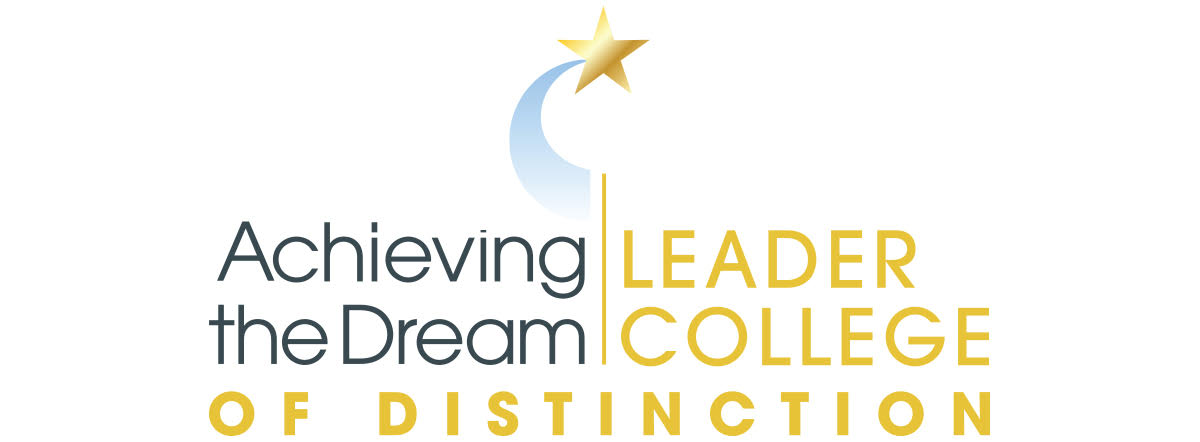
ACHIEVING THE DREAM
ATD is dedicated to helping more community college students stay in school and earn a college certificate or degree.

Passaic County Community College was named an Achieving the Dream Leader College of Distinction in 2018.
What is Achieving the Dream (ATD)?
Achieving the Dream, Inc. is a national nonprofit that is dedicated to helping more community college students, particularly low-income students and students of color, stay in school and earn a college certificate or degree. Evidence-based, student-centered, and built on the values of equity and excellence, Achieving the Dream is closing achievement gaps and accelerating student success nationwide by:
- Guiding evidence-based institutional improvement
- Influencing public policy
- Generating knowledge
- Engaging the public
Achieving the Dream is a comprehensive non-governmental reform movement for student success. Together with our network of higher ed institutions, coaches and advisors, state policy teams, investors and partners, we are helping more than 4 million community college students have a better economic opportunity and achieve their dreams. Learn more at www.achievingthedream.org
In this Chronicle of Higher Education interview, Karen Stout, President of Achieving the Dream, lays out the accomplishments, next steps and areas of focus for ATD.
Click here to watch interview.
HISTORY: FROM INITIATIVE TO NATIONAL NONPROFIT
For the first time in U.S. history, the current generation of college-age Americans will be less educated than their parents’ generation, yet our workplaces require higher-level skills than ever before. A healthy economy and democracy depend upon an educated citizenry, and increasingly, because of rapidly changing demographics and record levels of poverty, that means creating the conditions for more low-income students and students of color to attain postsecondary credentials.
Community colleges are a vital component in returning the U.S. to its place as a global leader in higher education degree attainment. Achieving the Dream, the nation’s leading community college reform network serving 3.5 million students throughout 30 states and the District of Columbia, has been and will continue to contribute significantly toward the nation’s goal of increasing the number of Americans with a college certificate or degree with marketplace value within the next decade.
Achieving the Dream was conceived as a national initiative in 2004 by Lumina Foundation (Founding Investor) and seven founding partner organizations that are leaders in the higher education field: American Association of Community Colleges (AACC); Community College Leadership Program at the University of Texas-Austin (CCLP); Community College Research Center, Teachers College, Columbia University (CCRC); Jobs for the Future; MDC; MDRC; and Public Agenda. Evidence-based, student-centered, and built on the values of equity and excellence, Achieving the Dream is closing achievement gaps and accelerating student success nationwide by: 1) improving results at institutions, 2) influencing public policy, 3) generating knowledge, and 4) engaging the public.
Over the course of six years, Achieving the Dream demonstrated that innovative, evidence-based community college programs and interventions can produce and sustain improved student success. In 2010, with the support of the Founding Investor and Founding Partners, Achieving the Dream’s Managing Partner (MDC) established an independent national nonprofit organization: Achieving the Dream, Inc. This nonprofit is led by an influential and diverse Board of Directors and professional leadership team, and continues to work closely with an extensive network of partners, investors, advisors, coaches, colleges, and state policy teams to help millions of community college students realize greater economic opportunity and achieve their dreams. Today, Achieving the Dream is the largest non-governmental movement for student success in higher education history.
VALUES
Achieving the Dream was founded upon three pillars that continue to fortify us at every turn.
These pillars lend strength, discipline, and focus to the work we do in this extraordinary complex sector: Achieving the Dream’s work is characterized by:
1. Student-Centered Vision: Helping all students – particularly low-income students and students of color – achieve their educational and career goals is of paramount importance.
When we are engaging students directly, listening to them, and tailoring our response to their needs, we are attuned to the “true north” of the Achieving the Dream internal compass.
2. Equity and Excellence: Achieving the Dream is dedicated to excellent education for all students. When an achievement gap exists between one subset of students and another, this represents an opportunity to make changes that bring about a more equitable educational environment.
3. Culture of Inquiry, Evidence, and Accountability: A hallmark of Achieving the Dream is our commitment to evidence-based decision-making. The Achieving the Dream
Network uses quantitative and qualitative data to stimulate reflection and discussion, and inform decisions in the quest for better student outcomes.
APPROACH
Achieving the Dream is closing achievement gaps and accelerating student success nationwide through efforts on four fronts: 1) improving results at institutions, 2) influencing public policy, 3) generating knowledge, and 4) engaging the public. These four fronts function as integrated levers that advance ground-level and system-level strategies to accomplish big-picture outcomes.
1. Improving Results at Institutions: We work directly with institutions, offering support that includes direct coaching and technical assistance for a growing set of community colleges.
2. Influencing Public Policy: We influence legislative agendas by advocating for the development and implementation of student-centered reforms and policies.
3. Generating Knowledge: In service to educators and the community college sector at large, we conduct and make available original research on success strategies and meaningful metrics.
4. Engaging the Public: With the nation’s largest network of community college reformers, we have established a common understanding of the barriers to student success and forged commitments to a shared success agenda.
